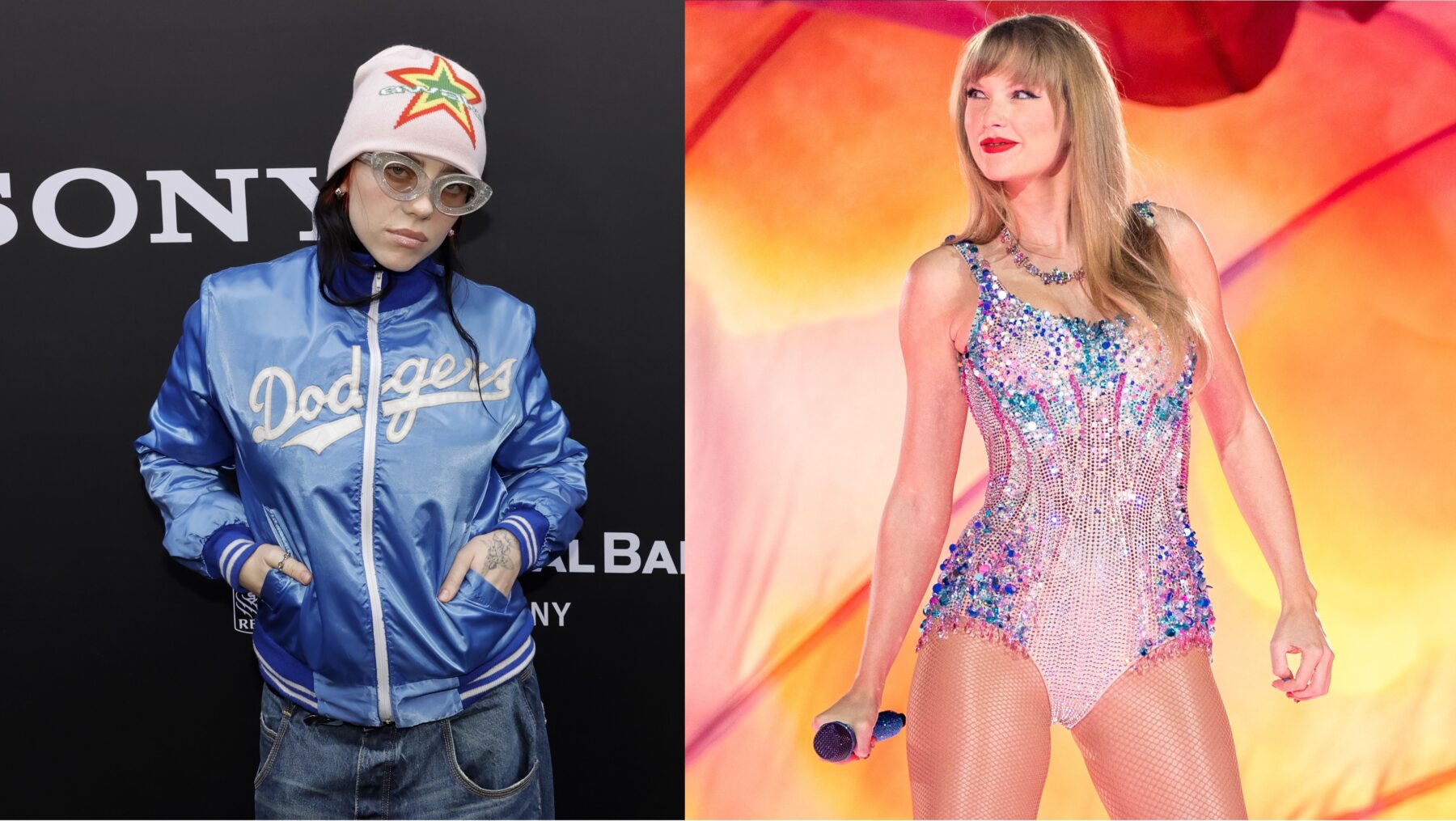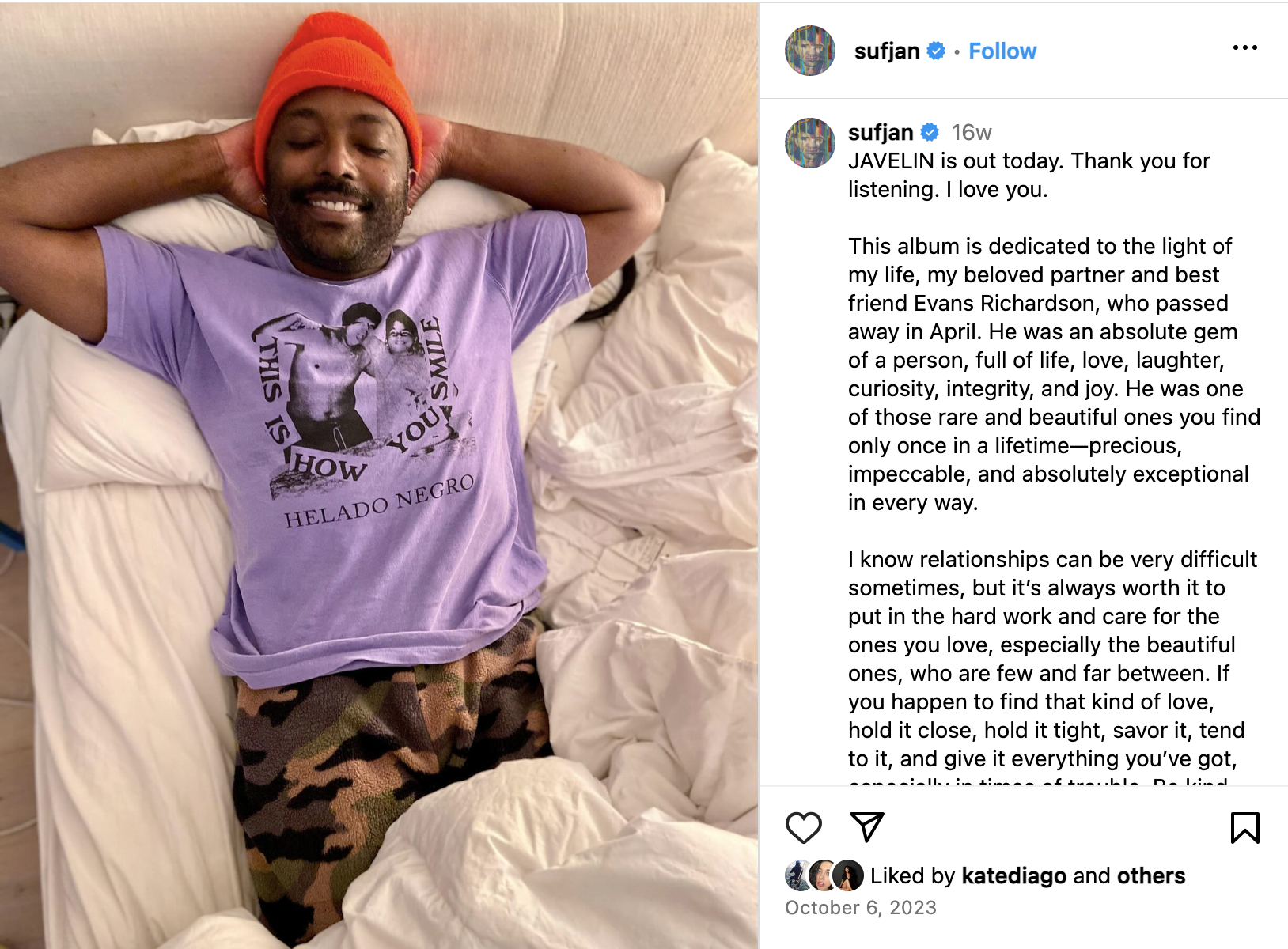
Speculation about Taylor Swift’s sexuality moved out of the fandom corners of the internet into the pages of The New York Times earlier this month. In a 5,000-word op-ed, editor Anna Marks explored the queer imagery in Swift’s work, while asking larger questions about what it means to “come out” and whether or not public figures owe it to the community to do so.
The Swift piece divided journalists, with some calling it “gross” and decrying the Times for publishing “unedited gaylor tumblr theories.” Others disagreed that analysis of a megastar’s lyrics were off-limits. Arwa Mahdawi at The Guardian wrote “no one seems perturbed at gossip about celebrities’ straight sex lives.”
The Times piece came shortly after Billie Eilish accused Variety reporter Tiana DeNicola of “outing” her during a red-carpet interview. “I just don’t really believe in it,” Eilish told DeNicola about “coming out.” “Why can’t we just exist?”
The discourse around Swift and Eilish has relitigated the questions: How and when should journalists cover a public figure’s sexuality? And when should they report that someone has “come out”?
In an age where more people are identifying as queer — a recent survey found that nearly 30% of Gen Z identifies as LGBTQ — reporting on a public figure’s sexuality is less cut and dried than it used to be. Nearly half of those Gen Zers who identify as LGBTQ specifically identify as bisexual, and many don’t want to have previous generations’ labels, restrictions or rules around coming out thrust on them.
“That embrace of fluidity by younger generations [has meant] people are a bit ahead of where the media is in covering these stories and these narratives,” said Mel Woods, senior editor of audience engagement at Xtra Magazine.
Adding to a generational disinterest in labels is a history of gayness being unacceptable, or even criminal. Queer artists and celebrities are used to having to hide in plain sight, and queer fans are used to having to read between the lines for clues.
“With younger musicians, it’s complicated,” said Samantha Allen, senior culture editor at the publication them. “Often, music they make is informed by and referencing their personal lives, and fans are encouraged to relate to those experiences with their music. Questions about pop stars’ identity are naturally going to arise.”
I spoke to several editors at LGBTQ publications, and while they all agreed there were no hard and fast rules on reporting on a public figure’s sexuality, they did offer some guidelines.
Follow the subject’s lead
There was a time when whether to report on a public figure’s sexuality seemed mostly black and white: Do not “out” someone in the press unless there is a good reason, like a politician who is backing anti-gay legislation but privately engaging in gay activity. Essentially, unless they did an Ellen DeGeneres-level “Yep, I’m gay” on a magazine cover, identifying them as queer in a public forum was off-limits. And to some extent, that’s still true.
“Self-declaration is the most important thing,” said Woods. “Choosing the words that we use very carefully and defaulting to how people describe themselves because we can speculate, we can make our own connections, but at the end of the day when you’re dealing with people, you do have to take what they’re saying at face value.”
Woods said it’s important not to apply labels like “queer” or “bisexual” to someone who hasn’t used it for themselves. It’s best to get it directly from the source. Brooke Sopelsa, editorial director of NBC Out, says she has had celebrities come out to her during an interview but asked her not to print it, and she has always abided by that request.
“We are not in the business of outing anybody against their will,” Sopelsa said.
In the case of Eilish, the singer had posted on Instagram about having crushes on women and being “gay and tired.” She said on the record in a Variety cover story, written by DiNcola, that she was attracted to women. But when DiNicola asked Eilish on the red carpet if she meant to come out in her Variety interview, Eilish said she didn’t. A day later, she called out Variety “for outing her on the red carpet.”
While Allen believes DeNicola wasn’t “outing” Eilish — the singer had made on-the-record comments about her attraction to women — the interaction may have still made Eilish feel uncomfortable. Timing, place and language are something for journalists to consider when posing these questions.
So, what should a reporter do in the case of someone like actor Jacob Elordi, who has made no public declarations about his sexuality and has only been romantically linked to women, but who has named several male actors as his “first celebrity crush?”
“If I were interviewing [someone like Elordi], and it was the kind of interview where we were getting personal like a profile, I would find it OK to say, ‘In previous interviews you’ve shared your first celebrity crush was so-and-so,’” said Sopelsa. “‘I know not everyone likes to put a label on their sexuality, do you label yours, and if so, is that something you’re comfortable sharing with the public?’”
Don’t pressure anyone to make a statement they aren’t comfortable with
Coming out does not look the same for everyone. Nor is it a rite of passage that needs to be done in a public way. One only needs to look at professional women athletes to see high-profile examples of public figures posting casual photos with female partners devoid of any big “coming out” announcement. Another example is singer-songwriter Sufjan Stevens’ recent Instagram post dedicating his newest album to his late partner. Soon, headlines proclaimed that Stevens had “come out.”
“Was he really coming out?” Woods asked. “He’s been queer in everything, he’s been singing about loving God in those gay ways for years. That [post] wasn’t really a coming out, but media couldn’t conceive of any other way to cover that.”
Allen said some celebrities are in a state of “quasi-outness.” “If someone is existing in that space, I don’t know that I call public discussion of it ‘speculation.’ The line is if people are targeting or pressuring people to come out or make a statement.”
Last fall, Heartstopper star Kit Connor said he felt forced to come out publicly as bi because fans accused him of “queerbaiting” — he was assumed to be a straight actor playing a queer role. Swift and other celebrities have also been accused of “queerbaiting” with their work, dress and behaviors, something Allen advises journalists against doing. The term was created to describe fictional characters and situations that pander to queer audiences without ever directly addressing queerness in the text. Celebrities who choose not to explicitly name their queerness to the public are not queerbaiting — they are simply choosing to keep their sexual orientation private.
Ask how this serves your audience
When discussing a public figure’s sexuality, journalists must also consider the format, audience and tone of the outlet or section they’re working for.
“Opinion and analysis are different than news reporting, which is different than a profile,” Woods said. “It comes down to respecting how the person is positioning themselves and also thinking about the platform and thinking about where these narratives live and exist and where they belong in our conversation.”
Sopelsa believes that if it’s relevant to the story being written, it shouldn’t be seen as inappropriate to ask someone about their sexuality — the same way reporters may ask subjects about their religion or political leanings if it is necessary context for a reader. “For NBC Out, we are the LGBTQ section of NBCNews.com, so we are covering stories for a national, mainstream outlet,” she said. That means that newsroom standards may look different than at a culture or queer-specific publication like them or Xtra.
At them, editors are addressing these questions directly with their audience. After the Times’ Swift op-ed ran, them published a conversation between Allen and two staffers that publicly grappled with what to make of the piece itself and the response to it.
“The middle ground is not the comfortable place for news media,” Woods said, “whereas culture reporting often combines opinion and analysis with reporting,” which may leave more space for the messy nuance to live.
Remember: It’s complicated
As culture changes, so do our norms and standards. As journalists, it’s important to remain nimble and adaptable, to change with the culture rather than become irrelevant.
“We make a lot of decisions in our newsroom where there is some subjectivity to them, but we do our best to consider all different perspectives,” Sopelsa said. “As a team, we try to do what’s best and be as respectful to the subject as we possibly can while also being as clear as possible to our reader, and sometimes those two things may be at odds with each other.”
In the end, not everyone will agree. “Part of why it’s hard to nail down is because it does very much feel like a new frontier for the media, grappling with that paradigm shift of increasing queerness,” Allen said.
Eilish may believe that Variety outed her, but DeNicola still feels differently. “I did not out Billie Eilish. Variety did not out Billie Eilish,” she said on the Exes and O’s podcast. “Seeing that, I felt sad for the LGBTQ+ community, thinking that they got representation and a proud advocate, but instead they got mixed messages. That was the heartbreaking part for me.”
That celebrities are still expected to have to come out at all is something many journalists covering LGBTQ communities hope will change. Perhaps soon, this conversation will be altogether obsolete.
“A lot of coverage is predicated on the assumption that everyone is straight until proven otherwise, and I don’t believe we live in that world anymore,” Allen said. “Are we speculating that someone is queer, or are we always assuming everyone is straight unless they explicitly state otherwise? That’s no longer a safe assumption to make, and our norms journalistically should shift to address that.”




